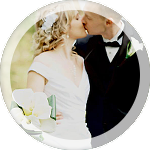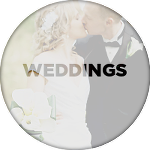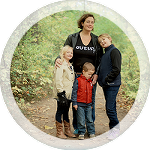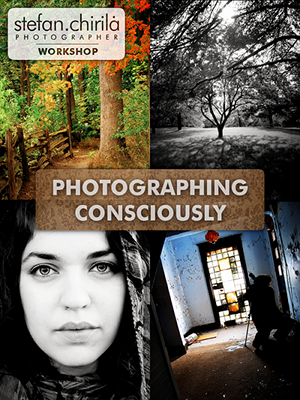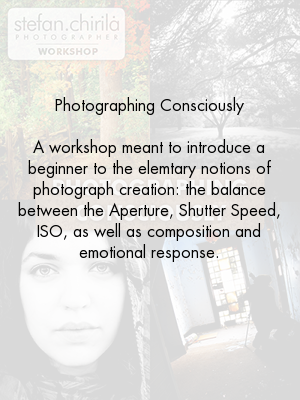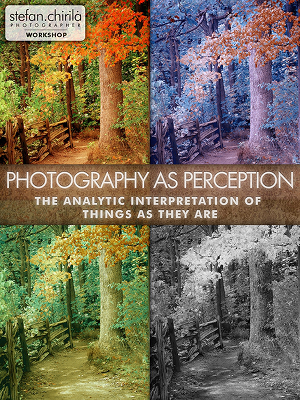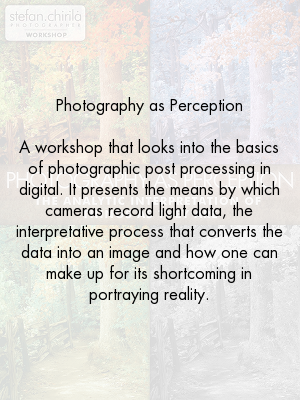This is more of a personal reflection entry, so expect an insight into my strange mind in the following lines. In 6 days I will start teaching my “Photographing Consciously” workshop. I am very excited and very much looking forward to it. Photography has occupied a whole lot of my time recently, in the past year at least, most of my time. At point in time I was faced with questioning its relevance to certain degrees, its importance, value, purpose; moreso in the past, as recently I received clearer answers to the questions I was posing. I don’t know if I mentioned this in previous journal entries, and it may come as a scandalous and surprising statement from me, a now-mostly-portrait-photographer, but in my early days of portrait photography I was relatively far from appreciating the value of images featuring people, in or not in the midst of their daily activities. I know, what a childish approach to photography, only seeing the value of recording the beauty of the tree-lined biking trails, which were and still are more or less threatened by the urban expansion in my home town. Initially I would photograph them in order to share the sights that impressed me, with those that would not join me on my cycling expeditions, later in order to conserve sights that would soon disappear behind the foundations of houses commercial complexes. Photographing people did not appeal to me much back then.
What changed my mind were two elements. At first, coaxed by my girlfriend to take self-portraits, I learned the craft of photographing people, and eventually went on photographing others than myself, only to find that so easily and well done photograph would put a smile on an otherwise sad face. That very much impressed me. I started to see value in this people centred way of doing photography. A second element was the realization that indeed, as frail and insignificant as it may seem, at first sight, to freeze a mere 1/100 of a second for the future to look back upon as representing a whole summer or a whole year, it is magnificent to live through the experience of coming upon images, forgotten, that attest to a time, now well in the past, that your mind attributes great valour to. Even if the images are only two or three. They can bring back more than just other images that would fill in the gap of other events in a day; some things you may have thought would be buried in your memory forever, irrecoverable.
I later stumbled upon street photography and eventually documentary photography/photo journalism which took me further down the path towards greater appreciation for this craft.
“Why photograph war? Is it possible to put an end to a form of human behavior, which has existed throughout history, by the means of photography. The proportions of that notion seem ridiculously out of balance, yet that very idea has motivated me. For me, the strength of photography lies in its ability to evoke a sense of humanity, if war is an attempt to negate humanity then photography can be perceived as the opposite of war and if its used well it can be a powerful ingredient in the antidote to war.
In a way, if an individual assumes the risk of placing himself in the middle of a war in order to communicate to the rest of the world what’s happening, he’s trying to negotiate for peace. Perhaps that’s the reason for those in charge of perpetuating the war do not like to have photographers around. In the field where your experience is extremely immediate, what you see is not an image in the page of a magazine ten thousand miles away with the advertisements for Rolex watches on the next page, what you see is unmitigated pain, injustice and misery. Its occurred to me that if everyone could be there just once, to see for themselves what white phosphorous does to the face of a child, of what unspeakable pain the impact of a single bullet or how a jagged piece of shrapnel rips someones leg off. If everyone could be there to see for themselves the fear and the grief just one time, then they would understand that nothing is worth letting things get to the point where that happens to even one person, let alone thousands.
But everyone cannot be there and that is why photographers go there, to show them, to reach out and grab them, to make them stop what they are doing and pay attention to what is going on. To create pictures powerful enough to overcome the deluding effects of the mass media and shake people out of their indifference, to protest and by the strength of that protest to make others protest!
” – Photographer: James Nachtwey
It is obviously his passion and hope for change that drive this man to go to the places where others dare not, and where for others it is not safe, in order to raise awareness.
On that note, that of passion, I would like to share some thoughts that I’ve had today in regards to a piece of visual art, the film Black Swan. For those who have not yet seen it, I do not wish to ruin it, so I will go straight to my point. The film brings up the notion that sex, as in seduction, has a very big impact within art, giving it greater amplitude. This notion has brought me back to a line of thought that I had walked a long time ago and that had remained somewhat unanswered for me. Do elements of seduction, or elements hinting at sexuality really make art more likeable?
To be honest, I am a bit bothered by the thought. Just like I feel treated like an animal when I see a commercial advertisement on television featuring a woman in a seductive pose next to the object advertised, not having much or anything to do with that object; simply for the purpose of creating interest in the object advertised. For example:
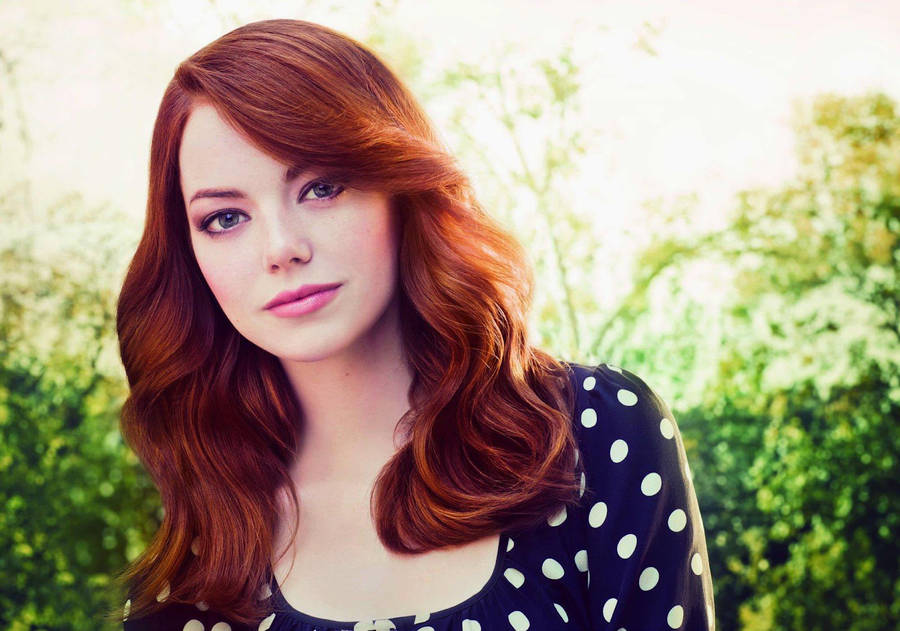
I am wondering, could one not create very appealing artwork without the sexually seductive element in it. Does sex really play such a vital role in art; or perhaps there is another element that is present and which can be isolated and implemented in other, non-sex-based pieces of art. My eventual conclusion was that it was the element of “passion” that I was looking for. Passion is the element that creates excitement when encountered in artwork. Whenever the viewer can detect it, in the eyes, or actions of the characters in the piece of art, the viewer relates to it and that passion is awoken within his/her heart. That is why, if you notice in the images above, all of them powerful artworks, but not all of them featuring potentially seductive themes, at least not the last three. Whenever passion is present, art is enriched. But where then do the sexual elements fit in, in all this and why do they seem powerful? Although it may not necessarily be the fact that they contain sexual material that makes them powerful, they do however contain material that inspires passion. Sex is after all one of those things that really easily affects emotionally. One enjoys art when one can easily relate to it, and this overused means to create emotion is one that is easy to relate to.









